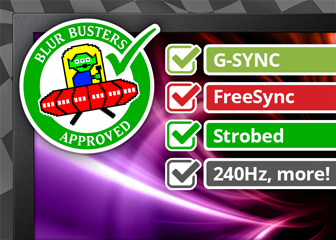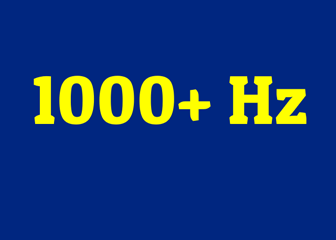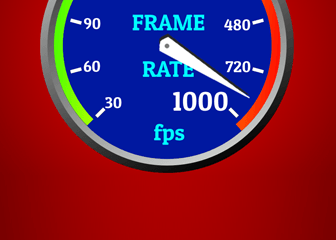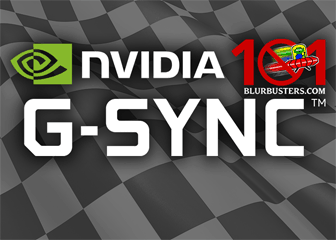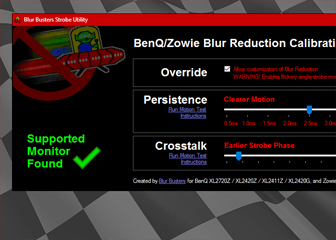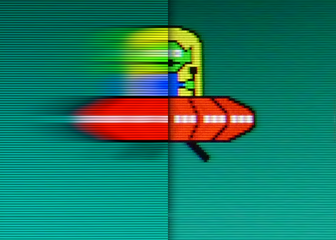Sample & Hold Performance
Introduction
The main focus of this article was flickering/motion blur reducing mode, but we’ll also quickly go through its flickerless mode. Sample & Hold is the standard, usually flicker-free mode that most modern displays use by default. It’s a type of technology where pixels are continuously illuminated (or held) for the duration of each frame, rather than being flashed briefly (as in impulse-type displays). The pixels or light source don’t turn off during the frame interval, they stay lit. Each pixel starts sampling its new color value and holds it steadily until the next frame update.
The Blur Busters Law still applies here – The amount of time a single frame is held is the MPRT the display is targeting. However, pixels do not change color instantly, they take some time to switch between colors. On LCDs that is liquid crystals rotating/moving. This is what’s known as GtG Response Times. This fading in and out of colors affects the motion performance. In real world such limitations translate to ghosting/smearing/delayed response during motion which can cause discomfort depending on intensity and user sensitivity.
Due to GtG limitations we are not getting the guaranteed minimum MPRT. We need a way to achieve fastest possible pixel response. This is where overdrive helps. Other than higher sample rate, good overdrive is pretty much the only viable way to improve motion resolution in Sample & Hold mode.
Glossary
- Refresh Rate: fixed or variable (FreeSync)
Range: 48-240 Hz fps by default - Pixel response: fast IPS, on average down to ~9.5 ms of complete GtG response without errors
Overdrive: 3 fixed levels, non-variable
